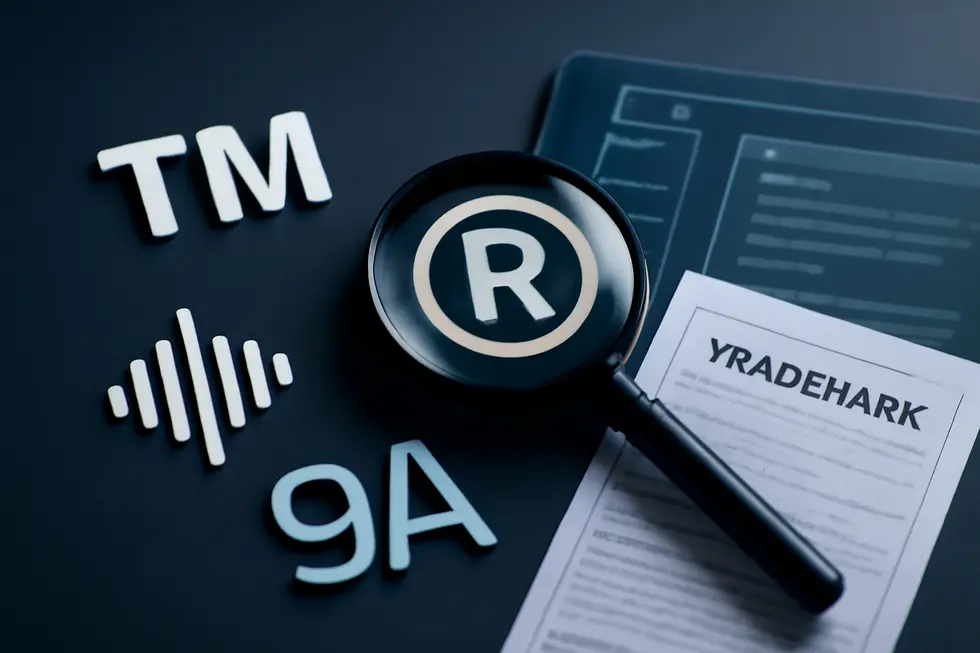Introduction
Trademarks are more than just logos or brand names; they are vital assets that define your business identity and safeguard your market position. Understanding the various kinds of trademarks is essential for business owners who want to build, protect, and expand their brands effectively. This knowledge enables you to navigate legal registration processes with confidence and avoid costly conflicts. This guide delves into three critical aspects: the conceptual distinctiveness of trademarks, their classification according to goods and services, and the tangible forms trademarks can take—including the essential searches needed for protection. Together, these perspectives will empower you to make informed decisions in selecting and defending your trademarks, ensuring that your business’s unique identity remains secure and recognizable.
Tables of Contents
Chapter 1: Understanding Trademark Strength: The Spectrum of Conceptual Distinctiveness
- Exploring the Spectrum of Trademark Distinctiveness: From Fanciful Creations to Common Generic Terms
- Navigating Legal Protections and Registration Challenges in Conceptually Distinctive Trademarks
Chapter 2: Exploring Trademark Classes: Organizing Protection by Goods and Services
- Understanding the Classification of Goods Within Trademark Categories
- Decoding Service Classifications: Navigating Trademark Protection for Service-Based Marks
Chapter 3: Exploring Trademark Forms and Strategic Protection Methods
- Understanding Trademark Forms, Classifications, and the Role of Comprehensive Protection Searches
- Navigating Trademark Forms and Search Strategies: Foundations for Robust Trademark Protection
Chapter 1: Understanding Trademark Strength: The Spectrum of Conceptual Distinctiveness

1. Exploring the Spectrum of Trademark Distinctiveness: From Fanciful Creations to Common Generic Terms
Trademarks vary significantly in their conceptual distinctiveness, a critical factor influencing their legal strength and protectability. This distinctiveness exists on a spectrum from the most inherently unique marks to those that are common descriptors or generic terms, shaping how trademark law treats their registration and enforcement.
At the pinnacle of this spectrum lie fanciful marks—words or symbols entirely invented for the purpose of functioning as trademarks. These terms have no prior meaning or association, crafted solely to identify the source of a product or service. Because fanciful marks are inherently distinctive, they receive the strongest legal protection. Their uniqueness minimizes confusion and firmly anchors brand identity in the marketplace.
Just beneath fanciful marks are arbitrary marks. These incorporate common words known in general language but are applied in an unrelated context. For example, a familiar object or term might be used as a brand name for a completely different category of goods or services. The disconnect between the everyday meaning of the word and its trademark usage grants these marks high distinctiveness and robust legal safeguarding.
Moving further down the scale, suggestive marks require a degree of imagination from the consumer to connect the mark with the underlying product qualities. These marks hint at a characteristic or attribute rather than explicitly stating it, relying on subtlety to convey meaning. While they hold moderate distinctiveness and are eligible for trademark protection, the conceptual leap needed to grasp the association generally means their protection is not as assertive as that of fanciful or arbitrary marks.
In contrast, descriptive marks straightforwardly identify a feature, quality, or characteristic of a product or service. Because they directly describe the goods, they lack inherent distinctiveness. Such marks must acquire secondary meaning—where consumers come to recognize the mark as identifying a particular source—before receiving protection. Without this acquired distinctiveness, descriptive terms remain vulnerable to use by competitors and are often rejected by trademark authorities for registration.
At the base of the gamut lie generic terms, which are the everyday names for products or services themselves. These terms are never protectable because they must remain free for public use to describe the goods or services offered. Attempting to monopolize generic terms would unfairly restrict language and limit fair competition.
This spectrum balances the trademark system’s twin goals: encouraging strong, unique brand identifiers while preserving the public domain of common language. Courts and trademark offices carefully evaluate marks through this framework to determine their eligibility for registration and the scope of their legal protection.
Understanding where a trademark falls on this spectrum not only guides brand strategy but also informs legal approaches for protection and enforcement, emphasizing the importance of selecting marks that are distinctive and meaningful within the marketplace. For businesses seeking to deepen their grasp of trademark protection nuances, exploring resources such as trademark protection for business names and logos can offer valuable insights.
2. Navigating Legal Protections and Registration Challenges in Conceptually Distinctive Trademarks
Trademark law intricately balances the protection and registration of marks according to their conceptual distinctiveness, which profoundly affects their enforcement scope and susceptibility to conflicts. This distinctiveness spectrum ranges from fanciful marks—entirely invented words with no prior meaning—to generic terms that describe general goods and receive no protection. Fanciful, arbitrary, and suggestive marks stand out legally for their inherent distinctiveness, allowing them to secure automatic registration and robust legal safeguards. These marks benefit from a strong presumption of exclusivity, enabling owners to prevent others from using confusingly similar trademarks across related goods or services.
In contrast, descriptive marks, which straightforwardly portray a feature or quality of a product, hold a more tentative position. Such marks require demonstration of secondary meaning, a consumer-recognition standard where buyers associate the descriptive term with a unique commercial source. This necessity complicates both registration and enforcement since the burden lies on the trademark holder to establish acquired distinctiveness before receiving legal protection. Without this showing, descriptive marks often lack enforceability, leaving them vulnerable to infringement and dilution.
Generic terms, being common names for goods or services, are expressly excluded from trademark protection to preserve open competition. Their ineligibility for registration underlines the law’s intent to prevent monopoly over language essential for describing everyday products.
When disputes arise, courts scrutinize the likelihood of confusion as a central metric. The strength of the mark—stronger for fanciful and arbitrary, weaker for descriptive without secondary meaning—weightily influences this analysis. Additionally, factors such as the similarity of competing goods or services, the overlap in marketing channels, consumer sophistication, and real-world evidence of confusion deeply inform judicial determination. The “commercial impression” the average consumer derives from the mark integrates visual, phonetic, and conceptual elements, anchoring the evaluation in practical marketplace realities.
Closely linked to these evaluations are legal mechanisms such as disclaimers, sometimes imposed during registration to exclude unprotectable descriptive components, thereby narrowing protection to distinctive features. Furthermore, dilution law offers an additional layer of defense, especially for famous marks, guarding against uses that blur their unique identity even absent direct confusion. Trade dress extends this concept by protecting non-traditional marks like packaging designs or product appearances that function as source identifiers.
An instructive example is the case where a common term gained protectable status through extensive consumer recognition and enforcement, illustrating how descriptive or common words can transcend their original category by acquiring distinctiveness. This underscores how conceptual distinctiveness and proactive brand development interact closely within trademark law’s landscape.
Effective trademark registration and enforcement hinge on appreciating these nuanced legal distinctions, making it imperative for businesses to understand how their marks’ conceptual nature influences protection avenues and risks of infringement. For more insight into securing your brand identity through trademarks, see our detailed exploration on trademark protection for business names and logos.
Chapter 2: Exploring Trademark Classes: Organizing Protection by Goods and Services

1. Understanding the Classification of Goods Within Trademark Categories
The classification of goods lies at the heart of defining the scope and strength of trademark protection. This organization is internationally standardized through the Nice Classification system, which divides trademarks into 45 distinct classes—34 dedicated to goods and 11 to services. This system ensures that trademarks are not registered in a vacuum but are affiliated with specific categories of goods or services, creating a structured framework essential for legal clarity and enforcement.
Classes group products and services based on shared characteristics, which helps register trademarks in a targeted, systematic way. For instance, Class 2 encompasses paints and dyes, reflecting chemical substances used in decorative or industrial applications. Meanwhile, food products like meat and dairy fall under Class 29, a grouping that captures perishable consumables. Service-related classes, ranging from 35 to 45, cover diverse fields such as marketing, business management, and legal services, illustrating the wide scope of trademark protection beyond tangible goods.
Precise classification is critical because trademark rights only extend to the categories explicitly covered in registration. An owner whose trademark is registered for one class cannot automatically claim protection in another unrelated class. Hence, applicants aiming for broad protection across multiple sectors must file their trademarks separately in each applicable class. This approach safeguards brand identities while respecting the distinct markets and industries trademark law serves. It also highlights the financial and strategic decisions that businesses encounter during trademark registration.
Beyond aiding in registration, the classification system plays a vital role in reducing conflicts between trademarks. When trademarks coexist in different classes, the risk of consumer confusion tends to diminish, supporting peaceful coexistence of brands in the marketplace. However, overlapping trademarks in related fields or those marketed through similar channels can still generate disputes, particularly when the boundaries between classes are blurred or when the nature of products and services overlaps. Therefore, careful class selection and understanding industry nuances remain indispensable for trademark owners seeking to enforce and defend their rights.
This classification framework also facilitates legal enforcement and broader brand strategy. Knowing the precise class—or classes—helps define the extent of a trademark’s protection in commercial use and when pursuing infringement actions. It also promotes smoother management of a brand’s portfolio, especially for companies expanding into new territories or product lines.
The USPTO and international bodies like WIPO provide detailed guidance and searchable databases to assist applicants in navigating these classifications effectively. Resources such as official manuals and online tools ensure applicants can make informed decisions on class selection, thus enhancing the likelihood of successful registration and meaningful protection.
Understanding how goods are classified within trademark categories underscores the foundational role this system plays in fostering a coherent and enforceable trademark landscape, directly impacting commercial strategy and legal protections. For more on protecting your brand identity effectively, consider exploring trademark protection for business name and logo.
2. Decoding Service Classifications: Navigating Trademark Protection for Service-Based Marks
Trademark protection hinges on clearly defining the goods or services a mark represents, making classification essential. In the realm of services, the systematized approach offered by the Nice Classification provides a structured framework that assigns trademarks to distinct service categories. Specifically, the Nice system designates Classes 35 through 45 for services, encompassing a wide spectrum of activities from business operations to medical care.
Class 35 initiates the service classifications, covering business management, advertising, and office functions. This broad category includes services that support commerce such as marketing campaigns, consultancy, and agency services. Closely related, Class 36 addresses financial and insurance services, embracing everything from banking to real estate management. As we move through the classes, the scope diversifies: Class 41 includes education, training, and entertainment services, reflecting the importance of knowledge dissemination and leisure activities in modern economies.
Scientific and technological services fall under Class 42, which is notable for its coverage of research and development, IT consulting, and software design. Meanwhile, Class 44 caters to medical and veterinary services, capturing a critical sector ranging from healthcare delivery to animal care. The remaining service classes round out sectors such as telecommunications, legal services, and personal care, highlighting the classification’s comprehensive nature.
The rationale behind this detailed categorization is twofold. First, it allows trademark applicants to specify the exact nature of their service offerings, which is crucial for defining the extent of trademark protection. Second, it helps reduce conflicts by distinguishing between marks used in unrelated service fields, something particularly vital in service industries where the scope of activities may intersect or overlap. For example, a trademark registered in Class 35 for advertising services will not necessarily conflict with a mark registered in Class 41 for educational services, even if both share the same name.
Correctly identifying the service class during trademark registration is critical. An error or omission can lead to inadequate protection or outright denial of the trademark application. The ability to register trademarks in multiple classes also benefits businesses that provide diverse services, facilitating broader legal coverage and brand consolidation.
Importantly, the Nice Classification is an international standard embraced by over 100 countries, making it a vital tool in global trademark strategy. It streamlines the registration process and helps ensure consistency across jurisdictions, enabling service providers to protect their brand identity effectively wherever they operate.
For service-based trademarks, leveraging the Nice Classification when applying for protection not only clarifies the scope of rights but also strengthens the enforceability of those rights against unauthorized use. Trademark owners are encouraged to consult official resources or use trademark class finders to select the precise classes that reflect their services, ensuring the mark enjoys the maximum possible legal shield.
For more insights on protecting your brand’s identity through proper registration, explore the guidance on trademark protection for business names and logos.
Chapter 3: Exploring Trademark Forms and Strategic Protection Methods

1. Understanding Trademark Forms, Classifications, and the Role of Comprehensive Protection Searches
Trademarks serve as vital identifiers that distinguish the source of goods or services, and their effectiveness heavily depends on the form they take and the scope of protection afforded to them. The most common trademark forms include word marks, design marks, service marks, and combinations thereof. Word marks protect the textual element of a brand, independent of any specific font or color, safeguarding the name itself. Design marks focus on logos or stylized imagery, often becoming the visual cornerstone of a brand identity. Service marks specifically identify services rather than tangible products, highlighting the diversity of trademarks in both goods and service industries. More specialized forms, such as sound marks or color marks, capture unique sensory elements like jingles or consistent brand colors, while motion marks protect moving images associated with a brand, though these are less frequently registered.
The classification of trademarks follows an internationally recognized system consisting of 45 classes under the Nice Classification. These classes divide goods and services into categories to streamline registration and minimize conflicts. Physical goods occupy classes 1 through 34, covering a wide range from cosmetics to electronics and clothing, while services fall under classes 35 through 45, encompassing business, education, and medical services among others. Selecting the accurate class is critical to ensure the trademark’s scope aligns with the brand’s actual offerings. For example, apparel products fall into one class, whereas ancillary services like custom printing may occupy a separate class, each requiring proper classification for effective protection.
Protection of trademarks is anchored in the legal status granted upon registration. Marks registered on the Principal Register gain broad legal safeguards, including presumptions of validity and nationwide exclusivity. Marks that may not immediately qualify for full registration, such as those considered merely descriptive, can be listed on the Supplemental Register, offering limited protection while establishing a path toward full rights. Over time, marks that have maintained continuous use and registration may achieve incontestable status, solidifying their protection and limiting challenges from others. Even unregistered trademarks can benefit from common law rights through actual use and marketplace recognition, though these rights are generally narrower and more difficult to enforce than registered rights.
Integral to both effective trademark protection and successful registration is the role of comprehensive trademark searches. These searches go beyond simple database checks to include federal, state, common law, domain names, and international records. Conducting thorough searches minimizes the risk of infringement and guides strategic decisions about the strength and availability of a mark. Distinctiveness classifications—ranging from fanciful and arbitrary marks, which are inherently strong, to descriptive marks requiring secondary meaning—further influence how a mark is perceived and protected. Understanding these characteristics equips brand owners to maximize trademark value and maintain clear market identity.
For those navigating trademark classifications, forms, and protection strategies, resources exist to demystify complex decisions. Engaging with guides such as those found at trademark2go.com can provide practical insights to align a brand’s identity with appropriate trademark categories and protection measures. Awareness of these facets ensures trademark filings are robust, enhancing legal protection and fostering long-term brand equity.
2. Navigating Trademark Forms and Search Strategies: Foundations for Robust Trademark Protection
Trademarks take many forms beyond simple words or logos, encompassing a diverse array of identifiers such as names, slogans, letters, numbers, sounds, and occasionally even smells or moving images. This variety allows brands to creatively distinguish their goods and services in a crowded marketplace. Understanding these forms is vital because each type may require different strategies for registration and protection.
Equally important is recognizing the organizational structure under which trademarks are registered. The United States Patent and Trademark Office (USPTO) categorizes trademarks into 45 distinct classes—34 for goods and 11 for services. This classification scheme ensures clear differentiation among various industries and product types, reducing legal conflicts and confusion. For example, cosmetics fall under Class 3, while clothing and footwear belong to Class 25. Selecting the proper class when applying for trademark registration is crucial; misclassification can weaken legal protection and complicate enforcement.
Before registration, conducting a thorough trademark search is necessary to avoid infringing on existing marks. Searches fall into two broad categories: knockout searches and full (comprehensive) searches. Knockout searches are preliminary scans that quickly identify any obvious conflicts in official databases. They serve as an initial filter to prevent investing in marks that are clearly unavailable.
Full searches, by contrast, involve a far more detailed examination. They review exact matches and similar variants across all relevant trademark classes, including alternative spellings, phonetic equivalents, and design similarities. Because the USPTO’s search tools require exact queries, minor differences in spelling or characters can be overlooked if not carefully checked. Moreover, full searches often extend beyond federal databases to include state registrations, common law trademarks, and even domain names, ensuring thorough scrutiny of all possible conflicting uses.
Conducting these searches carefully guards against costly disputes and registration refusals. A well-executed search helps determine whether a mark is unique enough to secure protection and informs strategic decisions about brand development. Legal expertise is often beneficial, as intellectual property professionals can interpret nuanced search results and assess risks associated with proposed trademarks.
Once a trademark passes the search phase and is properly classified, registration solidifies its legal standing. This registration grants the owner exclusive rights within the designated class, helping to prevent others from adopting confusingly similar marks. It also strengthens the brand’s identity, making enforcement against infringers more effective.
By combining a clear understanding of trademark forms with meticulous search strategies and proper classification, businesses can build and maintain strong trademark portfolios that stand up to legal challenges. This integrated approach is essential for safeguarding a brand’s unique presence in the marketplace.
For more insights on securing and protecting brand identity through trademarks, see guidance on trademark protection and business name/logo strategies.
Final thoughts
Protecting your brand starts with a clear understanding of the types of trademarks available and their roles in establishing your business identity. Recognizing the conceptual distinctiveness of your mark helps determine its strength and enforceability. Correctly classifying your trademark according to goods or services ensures comprehensive legal coverage aligned with your business scope. Finally, appreciating the variety of forms a trademark can take, alongside conducting rigorous protection searches, safeguards you from legal complications and strengthens your ownership claims. As business owners, integrating these insights into your branding and registration strategies will fortify your presence in the marketplace and help you build lasting brand value.
Your IP is the foundation of your success – let’s protect it together before it’s too late. We can’t wait to help you turn your ideas into legally secured assets.
About us
undefined


